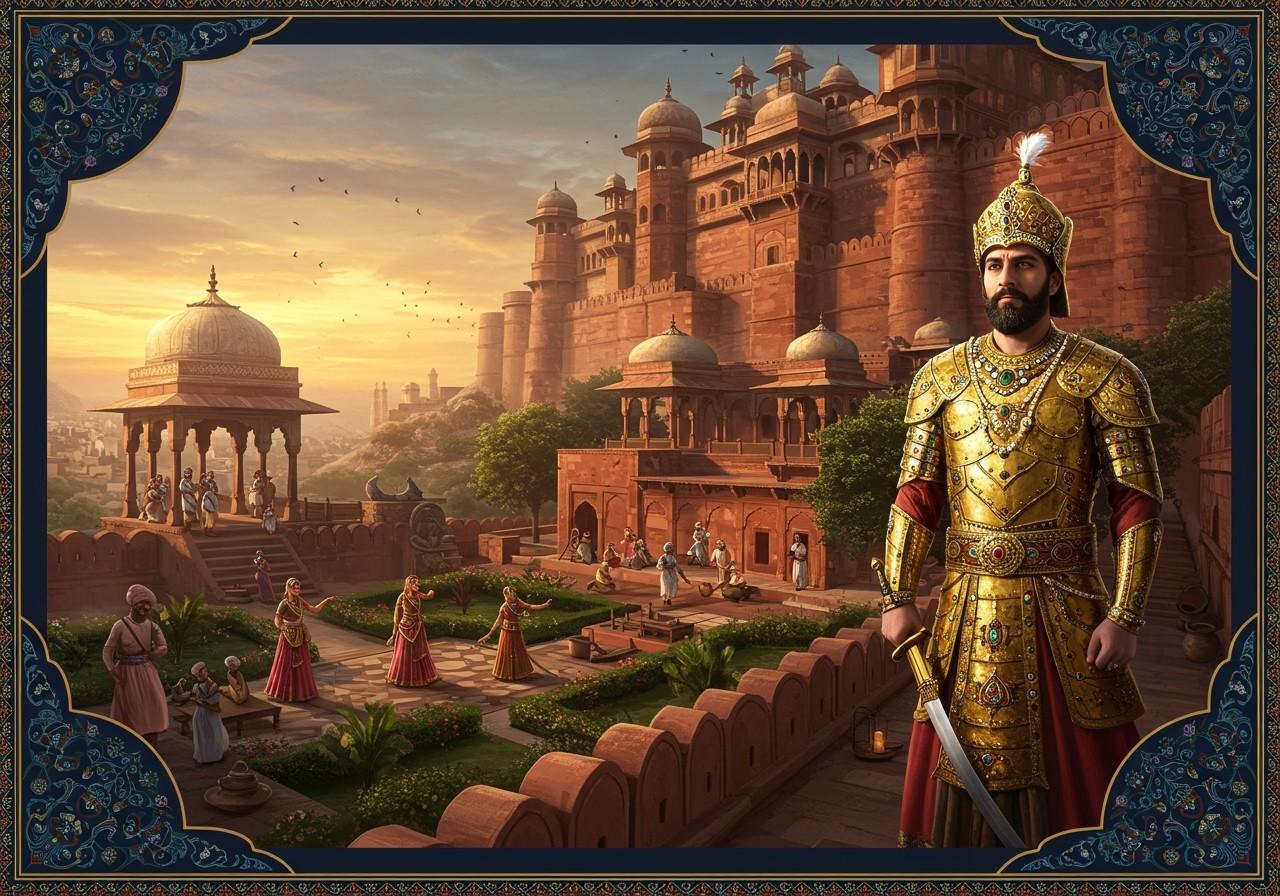
The Tomara dynasty holds a significant place in India’s rich tapestry of history and culture. Their influence on the political landscape of North India during the early medieval period is particularly noteworthy. Through their patronage of art and architecture, the Tomaras have left behind a lasting legacy. Delving into their traditions offers a deeper understanding and appreciation of their contributions to contemporary Indian society.
Origins and Historical Significance
The Tomara dynasty stands as a testament to India’s vibrant past. Recognized as one of the 36 Rajput clans, their lineage is often linked to the legendary Pandavas of the Mahabharata, adding to their historical and cultural significance.
Establishing themselves around present-day Delhi, the Tomaras became influential rulers. Anangpal Tomar, a prominent figure in their history, is credited with founding Delhi in the 11th century CE. His reign saw the rise of Dhillika (modern-day Delhi) and the construction of the Lal Kot fort, a symbol of the dynasty’s power and strategic acumen. Their dominion extended across parts of present-day Delhi and Haryana. Their rule, documented in ancient texts and inscriptions, offers insights into their governance and contributions to the historical narrative of India. The integration of Delhi into the Chauhan kingdom in 1164 CE marked the end of their reign, but their legacy continues to resonate.
The name “Tomara” itself has roots in Hindu culture, translating to “spear” or “javelin” in Sanskrit, embodying strength and valor. Understanding the Tomaras allows us to appreciate their role in shaping medieval North India. Their support of art and architecture has left an enduring mark on the cultural landscape. Even today, their legacy persists in traditions and customs cherished by many Indians.
Exploring Tomara Heritage with Poojn.in
Poojn.in, India’s leading online store for cultural and religious goods, provides a unique opportunity to connect with the Tomara heritage. Given the Tomara dynasty’s deep roots in Hindu culture, Poojn.in offers a wide selection of items relevant to Hindu traditions and rituals. While Arjun bark may not be directly linked to the Tomara dynasty, it holds significance within Hindu rituals and traditions. Poojn.in offers high-quality puja items and other traditional products that can enhance your understanding and appreciation of this rich heritage. Explore our diverse collection and discover meaningful ways to honor and celebrate India’s cultural legacy.
-
Customised Dust Coloured Clay Pot: Perfect for traditional ceremonies and rituals, these handcrafted clay pots add an authentic touch to your practices. Available in various sizes to meet your specific needs.
-
Fabric Coloured Hand-Printed Baran Dala Chalon: This beautifully crafted set, complete with bowls, a cover, and an oil lamp, is ideal for various puja ceremonies and adds a touch of traditional elegance to your rituals.
Note: Visit Poojn.in for the latest product availability, detailed descriptions, and pricing.
Conclusion
The story of the Tomara dynasty is one of valor, heritage, and profound cultural influence. Their pivotal role in shaping not only the physical landscape of regions like Delhi but also the cultural and traditional fabric of India is undeniable. Their contributions to art, architecture, and governance are still evident and appreciated today. The Tomaras serve as a reminder of India’s rich past and the significance of preserving and honoring our traditions. By reflecting on their legacy, we gain a deeper understanding of our own cultural identity and the values that continue to shape us.
Explore more about India’s rich spiritual heritage with our insightful blogs on sacred destinations: Andhra Pradesh Coastal Temples, Nilamadhav Temple, and Sacred Spaces of Odisha. These articles provide valuable insights into India’s diverse religious landscape and offer inspiration for your own spiritual journey.
Frequently Asked Questions about the Tomara Dynasty
How is “Tomara” pronounced? The pronunciation is “Toh-ma-ra,” with the emphasis on the first syllable.
What does “Tomara” mean in English? In English, “Tomara” refers to a historical dynasty that ruled parts of India in ancient times. The word itself means “spear” or “javelin” in Sanskrit.
What is the Hindi term for “Tomara”? In Hindi, it is written and pronounced as तोमर (Tomar).
Who were the Tomaras? The Tomaras were a Rajput dynasty that governed regions of northern India, notably areas around Delhi.
What is the historical significance of the Tomara dynasty? They are renowned for establishing the city of Delhi and for their contributions to art and architecture.
When did the Tomaras rule? Their reign spanned from approximately the 8th century to the 12th century CE, before being succeeded by the Chauhans.
What were the cultural contributions of the Tomaras? The Tomaras significantly influenced the development of regional art, architecture, and the urban layout of early Delhi.
Where can I find more information about the Tomara dynasty? Numerous resources are available, including history books, online articles, and museums with exhibits on ancient Indian dynasties.


